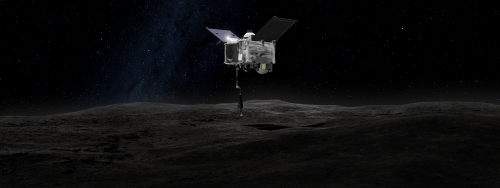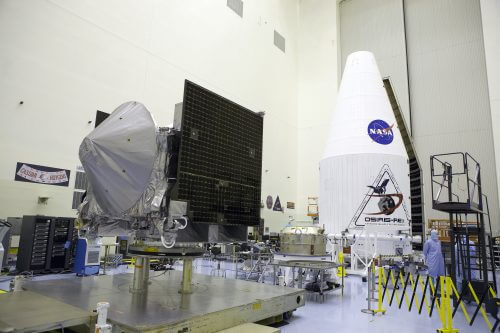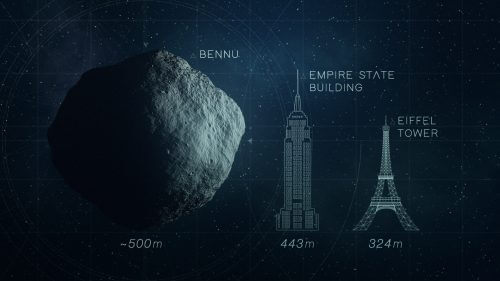The Osiris-Rex probe will be launched tomorrow and begin a two-year journey to the asteroid Bennu, from which it will return a sample to Earth in 2023.

Osiris-Rex, a research probe whose total cost is just under a billion dollars, will be launched tomorrow (Friday morning, according to Israel time) from the Cape Canaveral Spaceport in Florida aboard the Atlas 5 launcher. The probe will arrive at the Bennu asteroid in August 2018. During the journey to The probe asteroid will fly near the Earth to take advantage of its gravity and increase its speed to the speed required to reach the asteroid, which is defined as a near-Earth asteroid and orbits the Sun in an orbit that crosses the Earth's orbit.
The probe will not actually land on the asteroid to collect the sample, but will "kiss" it using a robotic arm at the end of which the sample collection mechanism is installed. After surveying the asteroid to map it and locate suitable places to collect the sample, Osiris-Rex will approach in July 2020 to a distance of about 5 meters from the asteroid and extend its robotic arm to collect a sample from the rocks and dust on its surface. After a few seconds the probe will disconnect and move away from the asteroid to keep it safe.
The sample you will collect will weigh between 60 grams and 2 kg, and it will be able to be used for many years by scientists for their research, similar to the rock samples that the astronauts of the Apollo program brought from the moon, most of which have not been used to date and are being kept for future research.
After the sample is collected, it will be put into a capsule back to Earth that is based on the capsule of the return of The Stardust probe, which collected a sample from the comet's tail and returned it to Earth in 2. The probe will then wait for the opening of a window to return to Earth in March 2006 and begin a two and a half year journey back. Before entering the atmosphere, the capsule will detach from the probe and land by parachute in a desert area in the state of Utah in the USA in September 2021. The probe itself will remain in space and continue to circle the Sun (NASA did not indicate whether the probe could continue on to another mission after that).

According to Dante Laureta, the mission's principal investigator, the Bennu asteroid was chosen because it is rich in carbon and may contain organic materials that are the building blocks of life. "The main objective of the mission is to return a sample of 60 grams of pure and carbon-rich material from the territory of Benu", said to Orta. He added that "we expect that these samples will contain organic molecules from the early solar system, which may give us information and clues to the origin of life."
According to the mission planners, it is indeed possible to find such organic substances in meteorites that reach the earth, but their scientific value is inferior compared to an original sample that was not contaminated during entry into the atmosphere.
Asteroids are the remnants of the early days when the planets formed from the material and dust in the preplanetary disk that surrounded the early sun. Since they did not go through geological processes like on Earth, they serve as a "time capsule" for this early period of the solar system.

Another and interesting goal of the mission is to examine the possibility that the asteroid in particular and asteroids in general will collide with the Earth. Benu is a near-Earth asteroid with an average diameter of about 500 meters, and its orbit brings it close to Earth every six years. The probability that it will hit the Earth in the period between the years 2175 - 2196 is estimated at about 0.037%. While this is a slim chance, it could change due to unexpected changes in the asteroid's orbit in the future. Osiris-Rex will examine the Yarkovsky effect, where the heat radiation emitted by the asteroid when it is heated by the sun may affect its orbit in the long run.
NASA is not the first space agency to aim to return an asteroid sample to Earth. The Japanese probe "Hyabusa" was the first to do this, when it reached the tiny asteroid Itokawa in 2005, and despite a malfunction that occurred during sample collection, it managed to return a microscopic-sized sample to Earth for laboratory testing. The success of this mission led Japan to launch a follow-up mission in 2014, Yabusa 2, which will also reach another asteroid in 2018 and return a sample from it to Earth (earlier than the American mission, in 2020 according to the current plan).
